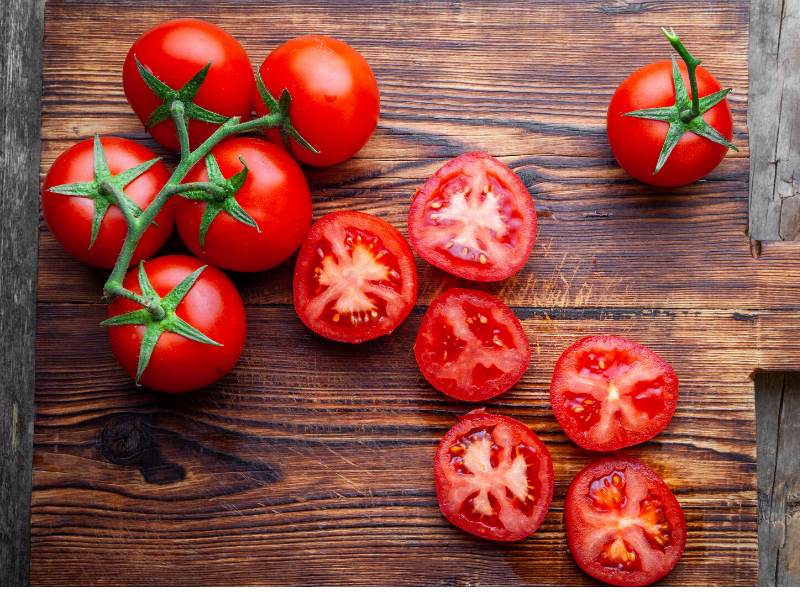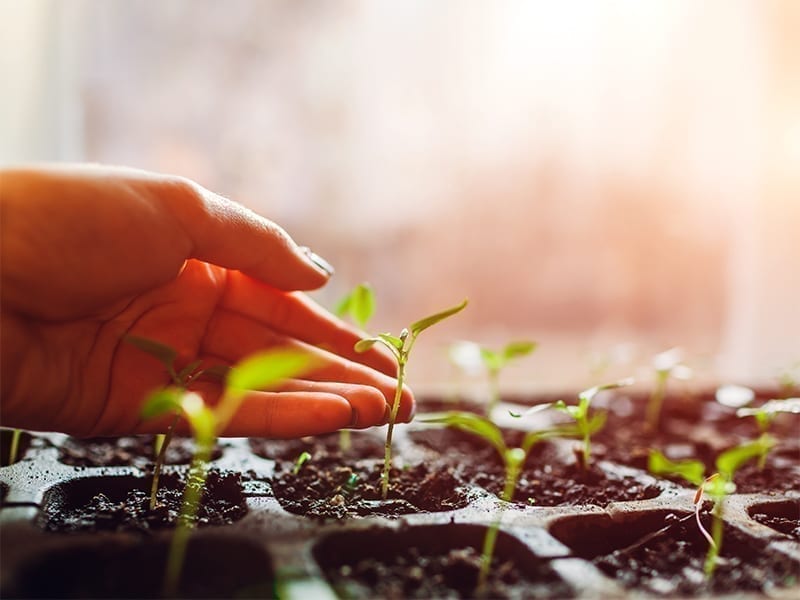The fun of snipping off fresh herbs from inside your kitchen or plucking crisp vegetables right from your terrace or balcony is unmatchable! People who plant fruits, vegetables and herbs in their home can’t stop raving about the joys of gardening. Since the coronavirus pandemic led to a lockdown, we have to rely on a limited supply of essentials. So to combat this issue, we can start a home garden right in our kitchen!
Going around your little garden can add joy to your day. Tending to various vegetation, planting seeds and watching your efforts come to fruition is fulfilling. So those who want to cultivate a green thumb, here are some great home gardening ideas in summer just for you.
8 Summer Vegetables To Grow In Your Home Garden
1. Tomatoes

Tomatoes are versatile in the kitchen and add a lot of flavour to a dish. A raw tomato has 18 calories and is 95% water. They are a great source of vitamins and minerals. They need to be placed in a sunny spot and thrive in six to eight hours of daily sunshine. Make sure to use a pot that’s big enough to accommodate the roots.
- Cut a tomato in half and scoop out the seeds.
- Place them in a container with a lid for a few days.
- Stir this daily till a mould forms and then dry them off completely before harvesting the seeds. This process takes about 2-3 days.
- Plant the seeds and then water them daily till they sprout. You can then water it less frequently to avoid rotting.
2. Green Chillies (Hari Mirchi)
No Indian recipe is complete without some mirchi and green chillies are an absolute favourite. Hari mirchi adds a lot of spice and is great for our skin and immune system. Loaded with vitamin C and beta-carotene, hari mirchi is proven to balance blood sugar levels. Green chillies need a lot of sunlight but remember to keep them under shade.
- Pick a pot or container of about 15 inches with proper drainage holes.
- Mix natural compost from your kitchen with the soil and plant the seeds.
- Make sure to not put them deep into the soil.
- Use porous soil and water when the topsoil is dry.
3. Coriander (Dhaniya)
Fresh dhaniya is a must in every Indian kitchen. It is a rich source of fibre, manganese, iron and magnesium. It contains a lot of vitamins and minerals. Dhaniya protects the heart by lowering blood pressure and LDL (bad) cholesterol while increasing HDL (good) cholesterol.
- Split coriander seeds in two to speed up the germination process.
- Directly sow the seeds in the soil. You can draw ½ inch lines in the soil to plant the seeds.
- Water them regularly as they start germinating in 5-7 days.
- Once they start germinating, make sure the plants receive adequate sunlight.
- Keep watering them thoroughly and put them under shade to avoid harsh sunlight.
4. Brinjal (Baingan)
The Indian baingan is known as eggplant or aubergine around the world. A favourite of Indian moms, baingan is full of vitamins and minerals. It helps with digestion, improves heart health and bone health, prevents anaemia and increases brain function. And when cooked right, can be a delicious source of nutrients.
- Start by soaking the seeds overnight to kickstart the germination process.
- Sow them ¼ inch deep in the soil.
- They sprout in 8-10 days and then can be transferred to larger pots.
- Indian summers will help maintain the perfect temperature.
- Water them well and make sure to add compost directly from your kitchen.
5. Fenugreek (Methi)
Methi is a versatile vegetable used to prepare sabzi, paratha and so much more. Methi is great for healing inflammation, improving digestive problems and lowering cholesterol. Also, fenugreek for hair helps in strengthening roots and improving hair texture. You can get your own fresh supply of methi at home by planting it in your home or terrace garden.
- Soak the seeds overnight before planting them.
- Sprinkle the seeds on the soil where you intend to plant them. They do not need to be distanced as they grow great on their own.
- Cover them with a layer of soil, about ¼ inch.
- Water the seeds regularly and you can see the bud sprouting between 3-5 days.
- In 3-4 weeks the seedlings will be ready to harvest.
6. Capsicum (Shimla Mirch)
This vegetable works for all kinds of cuisines like Continental, Indian and Chinese. Shimla mirch an excellent source of vitamin A and C along with fibre, vitamin E, B6 and folate. Full of antioxidants, Shimla mirch speeds up the metabolism and helps burn more calories.
- Soak the seeds in warm water for 8-10 hours.
- Plant the seeds in small containers, about ¼ inch deep in the soil.
- Spray the soil with water and keep it moist.
- Once you see full-grown leaves, transplant them into a pot and pack it in place.
- Place them in direct sunlight and water consistently.
7. Cucumbers
Cucumbers, known as kheera, are great for the summers. It cools down the body and is a refreshing source of nutrients. It is low in calories, contains antioxidants, promotes hydration and is easy to add to your diet.
- Pick a large pot and add small stones, clay shards or gravel in the bottom of the pot to aid drainage.
- Plant 4-5 seeds in a fertiliser-rich soil about ½ inch deep.
- Water thoroughly and make sure it gets plenty of sunlight.
- Insert sticks, once it grows to 10 inches in height, in order to support the vines.
8. Lady Finger (Bhindi)
Also known as okra, this vegetable is regularly cooked in Indian households. It’s rich in magnesium, folate, fibre, antioxidants, and vitamin C, K1, and A. Bhindi benefits pregnant women, improves heart health, and balances blood sugar control.
- Keep the seeds well-watered and in a sunny area to start the germination process.
- Choose a spot that receives the maximum amount of sunlight.
- Plant the seeds 4 inches apart, about ½ inch deep in nutrient-rich soil.
- Water them generously in the morning and thin out the weaker seedlings.
- Make sure to get rid of weeds.
8 Tips & Hacks To Maintain Your Home Garden
- Choose what to plant based on your as well as your family’s preferences.
- Consider the availability of vegetables to derive seeds for planting.
- Gardening is a great summer activity so get your kids involved and make it quality family time.
- Use seeds from fresh produce to avoid rot, fungus and mould.
- Plant in a corner where you can get enough sunlight without the strong winds.
- Take into consideration the amount of produce needed and plan the quantity accordingly.
- Plant tall veggies on the north side of the garden so they don’t shade shorter plants.
- Planting herbs is easy and they provide an instant way to jazz up a recipe.
There are several vegetables and herbs you can grow during the summer. Remember to plan the type of plant, timing, sunlight and water requirements according to the Indian summers. Enjoy your very own home vegetable garden!

